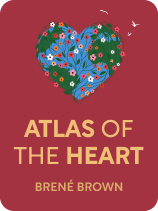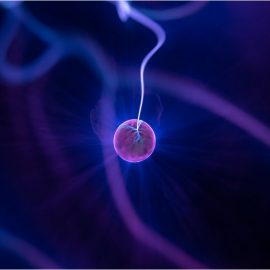

This article is an excerpt from the Shortform book guide to "Atlas of the Heart" by Brené Brown. Shortform has the world's best summaries and analyses of books you should be reading.
Like this article? Sign up for a free trial here .
We often say we’re happy or sad, but what exactly is happiness? And what exactly is sadness?
According to Brené Brown, happiness and sadness lie at the opposite ends of the emotional spectrum. As basic emotions, they serve as the foundation of numerous others (e.g. happiness for joy and gratitude, and sadness—for hopelessness).
Here’s how Brené Brown explains happiness and sadness.
When Things Are Going Well: Happiness
According to Brené Brown, happiness is the pleasure related to your surroundings or your current circumstances. However, happiness isn’t just a single state.
Gratitude is related to happiness, but it’s an active process: It means taking time and energy to appreciate what you have and what brings meaning to your life.
Joy is a brief state of intense happiness. Brown believes that joy stems from a feeling of deep connection and appreciation, and that it has a spiritual aspect—a sense of experiencing something greater or more powerful than ourselves. Joy can occur in response to a person, an environment, or an experience—for example, seeing someone you love, standing by a beautiful waterfall, or losing yourself in a dance can all spark joy.
Contentment is a pleasurable feeling that comes from knowing your physical, emotional, and spiritual needs have been met. It’s the satisfaction that comes from finishing your work, whether you’re finished for the day, the week, or the rest of your life. Brown says that contentment is a mild feeling—if joy is at the high end of the happiness spectrum, contentment is at the other end.
Tranquility is closely related to contentment: It’s the peace that comes from having no work to do. In other words, whereas contentment is the satisfaction of finishing your work, tranquility is the pleasure of having no upcoming demands on your time or energy.
Brown also says that our culture tends to devalue contentment and tranquility. People believe every moment should be joyful or exciting, so they constantly chase those highs, making simple contentment feel dull by comparison. However, it’s impossible to be joyful all the time—Brown suggests learning to enjoy moments of contentment and tranquility, instead of being disappointed that we’re not experiencing something more intense.
When We Experience Loss: Sadness
To begin, sadness is a painful feeling that we experience in response to loss. Sadness is a fundamental human emotion—in fact, Brown says it’s one of the few states that people regularly report being able to identify.
While sadness is driven by loss (for example, of a loved one, a cherished item, or even of a comforting idea), it also implies acceptance of that loss. That makes sadness different from grief, which combines painful feelings of loss with a desire to get back what we lost, even if that’s impossible.
Hopelessness is closely related to sadness. Hopelessness is a response to loss of control (or perceived loss of control)—it’s the feeling that we’re unable to change things for the better.
Brown says that hopelessness has three root causes:
- Not knowing what we want
- Knowing what we want, but not how to get it
- Knowing what we want and how to get it, but still not believing that we can
She adds that the combination of hopelessness and sadness is called despair. Despair means that we’re suffering, and we don’t think there’s anything we can do about it.

———End of Preview———
Like what you just read? Read the rest of the world's best book summary and analysis of Brené Brown's "Atlas of the Heart" at Shortform .
Here's what you'll find in our full Atlas of the Heart summary :
- Brené Brown's guide to the many emotions and mental states that people feel
- Explanations of 87 emotions, along with the situations where you’re likely to encounter them
- How to form deeper connections with the people around you






